 |
EXCESS OF THE CARRYING AMOUNT OF THE QUALIFYING ASSET OVER RECOVERABLE AMOUNT |
| << BORROWING COST |
| EARNINGS PER SHARE >> |
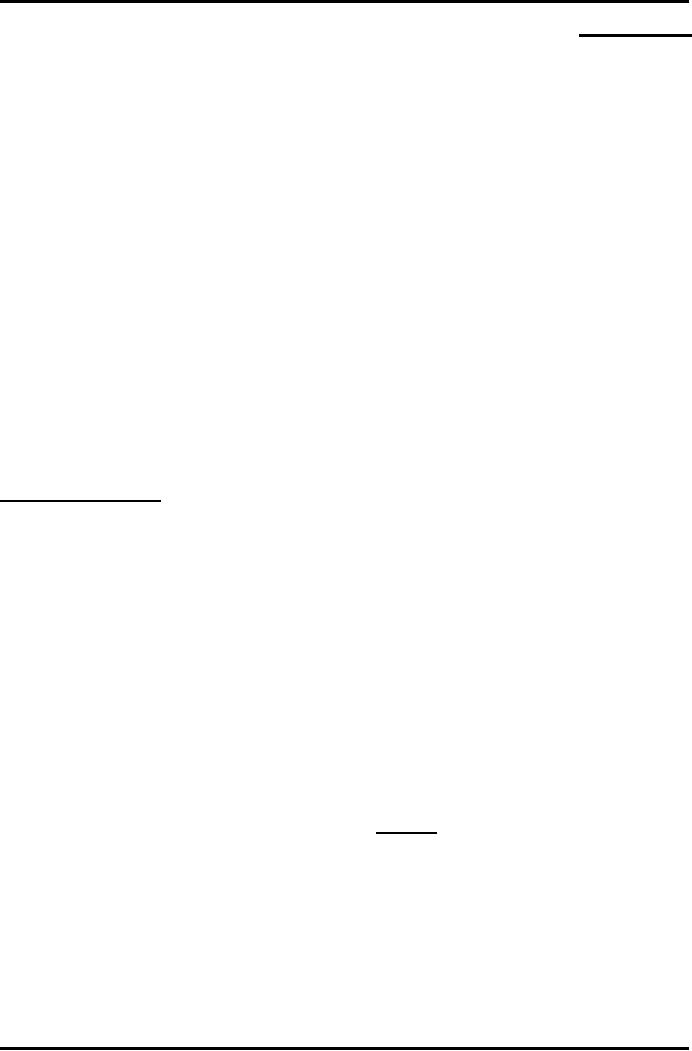
Advance
Financial Accounting
(FIN-611)
VU
LESSON
# 32
EXCESS
OF THE CARRYING AMOUNT OF THE QUALIFYING ASSET
OVER
RECOVERABLE
AMOUNT:
When
the carrying amount or the
expected ultimate cost of
the qualifying asset
exceeds
its recoverable amount or net
realizable value, the
carrying amount is written
down or written
off in accordance with the requirements
of other Standards. In
certain
circumstances,
the amount of the write down or write-off
is written back in accordance
with
those other
Standards.
Commencement
of capitalization:
The
capitalization of borrowing costs as
part of the cost of a
qualifying asset
shall
commence
when:
(a)
Expenditures
on the asset are being
incurred;
(b)
Borrowing
costs are being incurred;
and
(c)
Activities
that are necessary to
prepare the asset for its
intended use or sale
are
in
progress.
Solved
problem #7:
Silver
Star (Private) Limited
engaged in manufacturing of surgical
items.
Currently
the company is manufacturing
its power plant. The
company started the
project
on February 01, with its own
funds. Later on due to shortage of
funds, the
company
takes a loan to sponsor the
project on May 01. The first
payment out of the
loan
on the plant is made on June
01.
Required:
When
should the company commence
capitalization of borrowing cost on
the plant?
Solution:
The
necessary three conditions for
commencement of capitalization are
fulfilled on
June
01, so capitalization should
commence on June
01.
Treatment
of Subsidies by the
Government:
Expenditures
on a qualifying asset include only
those expenditures that have
resulted
in
payments of cash, transfers of
other assets or the assumption of
interest bearing
liabilities.
Expenditures are reduced by any
progress payments received and
grants
received
in connection with the asset.
The average carrying amount of
the asset during
a
period, including borrowing
costs previously capitalized, is normally
a reasonable
approximation
of the expenditures to which the
capitalization rate is applied in
that
period.
173
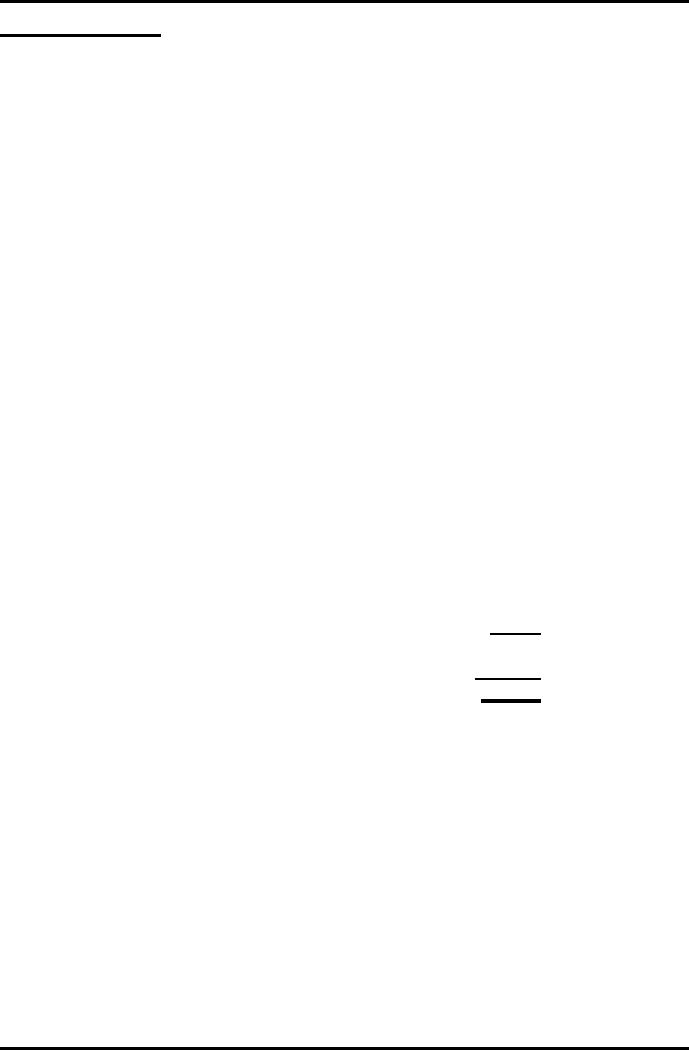
Advance
Financial Accounting
(FIN-611)
VU
Solved
problem #8:
Pak
Solutions Limited is engaged in
the production of plants.
The company is
currently
manufacturing a plant for internal
use.
Following
expenditures were
made:
Rupees
Payment
to vendors for material
500,000
Depreciation
of equipment used for manufacturing of
plant
20,000
Wages
paid
300,000
Utilities
to be paid
80,000
Government
granted a subsidy to the
company for manufacturing of plant
amounting
to
Rs.200, 000.
Required:
Assuming
that the company funds the
project by obtaining a loan,
calculate the
amount to be
used as cost of the asset
for computing the borrowing
cost eligible for
capitalization.
Solution:
Amount on which
capitalization should be
made:
Rs.
Payment
to vendors for materials
500,000
Wages
paid
300,000
Depreciation
of equipment
20,000
Utilities
to be paid
80,000
900,000
Less:
Govt. subsidy
(200,000)
700,000
The
activities necessary to prepare
the asset for its intended
use or sale encompass
more
than the physical construction of
the asset. They include
technical and
administrative
work prior to commencement of physical
construction, such as
the
activities
associated with obtaining permits
prior to the commencement of
the physical
construction.
Suspension
of capitalizing borrowing
cost:
Capitalization
of borrowing costs shall be
suspended during extended periods
in
which
active development is
interrupted.
Capitalization
is not suspended when a temporary delay
is a necessary part of
the
process
of getting an asset ready for
its intended use or sale
e.g. the extended
period
during which
high water level delay
construction of a bridge.
174
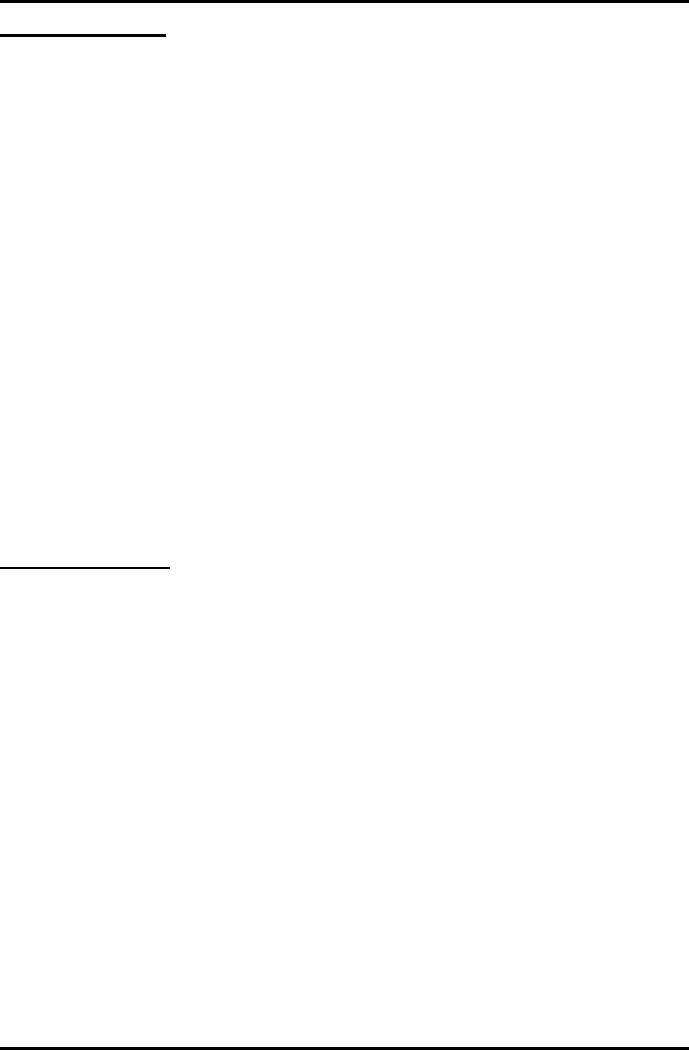
Advance
Financial Accounting
(FIN-611)
VU
Solved
problem # 9:
Shahid
and company is constructing an asset for
their own use in the
business.
The
production of asset started on
September 30, 2006. Due to
some internal
problems
of
the company, the
construction remained suspended from
November 01 to
November
31. The asset was
completed on December 31.
The asset was constructed
by
utilizing
the borrowed funds.
Required:
Calculate
the period for which capitalization
should be made.
Solution:
The
active development started on
September 30, and continued till
October 31, and
then
after stoppage construction
again started on December 1 till
December 31.
Therefore,
the borrowing cost should be
capitalized for two months and shall
remain
suspended
for one month.
Cessation
of Capitalization:
Capitalization
of borrowing costs shall
cease when substantially all the
activities
necessary
to prepare the qualifying
asset for its intended use
or sale are complete.
Solved
problem #10:
Haroon
Limited is constructing an asset for
its internal use. The
construction started
on March
01, 2009. The asset
was completed on July 31,
2009. It was put into use
on
September
15. The production was
started from such asset on
November 1.
Required:
You
are required to state when
capitalization of borrowing cost
should be ceased.
Solution:
The
asset was completed on July
31, 20x9. It was ready for
use although the
production
from such asset was not
started. Thus capitalization of borrowing
cost
should
cease on July 31,
2009.
Modification
work after
completion:
An
asset is normally ready for its
intended use or sale when
the physical
construction
of
the asset is complete even
though routine administrative work might
still continue.
If minor
modifications, such as the
decoration of a property to the
purchaser's or
175
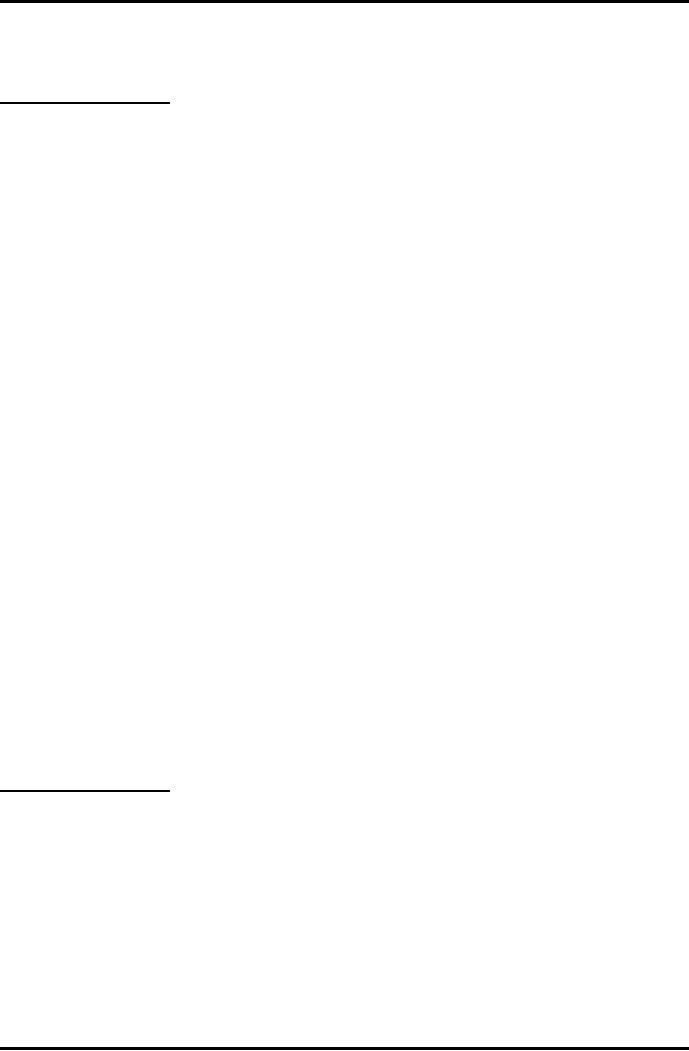
Advance
Financial Accounting
(FIN-611)
VU
user's
specification, are all that
are outstanding, this
indicates that substantially all
the
activities
are complete.
Solved
problem #11:
Zeshan
Limited is engaged in production of an
asset. The production
started on July
31,
2007. The production
completed on July 31,
2008.
The
works manager checked the
asset and requested some minor
modifications. These
modifications
were completed on August 30,
2008. The asset delivered to
works
manager
on September 10, 2008. The
production started from such
asset on October
01,
2008.
Required:
When
should capitalization
cease.
Solution:
The
capitalization should cease on
July 31, 2008, as
substantially the activities
have
been
completed on this
date.
Completion
of work in parts:
When
the construction of qualifying
asset is completed in parts and
each part is
capable
of being used separately while
construction continues on other
parts,
capitalization
of borrowing costs shall
cease when substantially all the
activities
necessary
to prepare that part for its
intended use or sale are
completed.
A
business centre comprising
several buildings, each of which
can be used
individually is
an example of a qualifying asset for
which each part is capable of
being
used
while construction continues on other
parts.
An
example of a qualifying asset
that needs to be completed in full,
before any other
part
can be used, is an industrial
plant involving several processes which
are carried
out in
sequence at all parts of the
plant within the same site,
such as a steel mill.
Solved
problem #12:
Sialkot
(Pvt.) Limited contracted with B
Limited to build a group of factory
buildings.
Each
building is capable of being
used separately.
Sialkot
(Pvt.) Limited capitalizes
its borrowing costs in
accordance with Allowed
Alternative
Treatment of IAS-23, Borrowing
Costs.
Required:
Advice
the company to capitalize
its borrowing costs based on
the period when all
the
buildings
are ready for use or based
on the period when each
building is ready for
use.
176
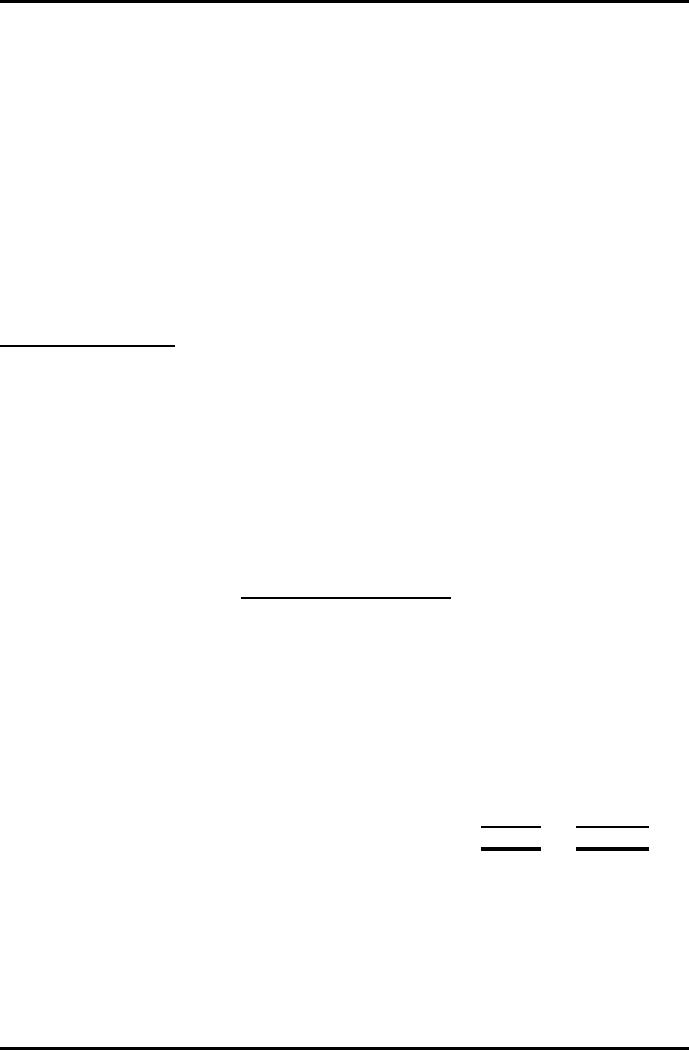
Advance
Financial Accounting
(FIN-611)
VU
Solution:
As
each component of the
contract is capable of being
used separately, the
borrowing
costs
should be capitalized based on
the period of construction of
each building.
Disclosures:
Following
should be disclosed in the
financial statements:
(a)
The
accounting policy adopted for
borrowing costs;
(b)
The
amount of borrowing costs capitalized
during the period; and
(c)
The
capitalization rate used to
determine the amount of borrowing
costs
eligible
for capitalization.
Solved
problem # 13:
Disclosure:
(i)
Borrowing
costs are recognized as an
expense in the period in which
these are
incurred,
except to the extent that
borrowing costs that are
directly attributable
to
the acquisition, construction or
production of a qualifying asset is
capitalized
as
part of the cost of that
asset.
(ii)
The
amount of borrowing costs capitalized
during the period is Rs.
75,145.
(iii)
Capitalization
rate for the year used to
capitalize borrowing costs is
9.15%.
PRACTICE
QUESTIONS
QUESTION
#1:
On 1st Jan 2006, Sparkle Co
borrowed Rs. 1.5 million to
finance the production of
two
assets
both of which were expected to
take a year to build.
Production started during
2006.
The loan facility was drawn
down on 1 Jan 2006 and was utilized as
follows,
with
the remaining funds invested
temporarily
Asset
A
Asset
B
1
Jan 2006
250,000
500,000
500,000
1
Jul 2006
250,000
500,000
1,000,000
The
loan rate was 8 % and
Sparkle Co can invest
surplus funds at 5 %.
Required:
Calculate
the borrowing costs which may be
capitalized for each of the
asset and
consequently
the cost of each asset as at
31 Dec 2006.
177

Advance
Financial Accounting
(FIN-611)
VU
QUESTION
#2:
AUM
engineering limited has been
engaged in construction business and wins
a
contract
to construct Kalabhag Dam work Rs. 120
million with a completion period
of
one
year.
Progress
payments made by the
government are as under
1st April
30
M
1st July
30
M
31st December
60
M
The
company's bankers agree to
finance the project @ 9 % mark up
per annum as per
following
schedule.
1st January
40
M
1st April
40
M
1st July
40
M
The
company realizes at the end
of third month that second installment
of
disbursement
by the bankers needs to be
paid to the company's
creditors a month
later.
Therefore, on receipt of second
installment, it is temporarily invested
to fetch
return of 2 %
per month to the
company.
Required:
Compute
the amount of borrowing cost to be
capitalized as per
IAS-23.
QUESTION
#3:
Loan
worth of Rs. 300,000 taken on 1st January 2006 for construction of X and Y
blocks.
Interest
Rate is 10% per annum and
surplus funds are invested @ 7%
per annum.
Detail
of Expenditure
Year
2006
X
Y
1st January
100,000
50,000
30th June
0
60,000
_______
______
110,000
100,000
Block
X was completed on June 30,
2006.
Required:
Calculate
total expenditure on X and Y Blocks as on
December 31, 2006,
applying
allowed
alternative treatment under IAS-23 is
adopted.
178
Table of Contents:
- ACCOUNTING FOR INCOMPLETE RECORDS
- PRACTICING ACCOUNTING FOR INCOMPLETE RECORDS
- CONVERSION OF SINGLE ENTRY IN DOUBLE ENTRY ACCOUNTING SYSTEM
- SINGLE ENTRY CALCULATION OF MISSING INFORMATION
- SINGLE ENTRY CALCULATION OF MARKUP AND MARGIN
- ACCOUNTING SYSTEM IN NON-PROFIT ORGANIZATIONS
- NON-PROFIT ORGANIZATIONS
- PREPARATION OF FINANCIAL STATEMENTS OF NON-PROFIT ORGANIZATIONS FROM INCOMPLETE RECORDS
- DEPARTMENTAL ACCOUNTS 1
- DEPARTMENTAL ACCOUNTS 2
- BRANCH ACCOUNTING SYSTEMS
- BRANCH ACCOUNTING
- BRANCH ACCOUNTING - STOCK AND DEBTOR SYSTEM
- STOCK AND DEBTORS SYSTEM
- INDEPENDENT BRANCH
- BRANCH ACCOUNTING 1
- BRANCH ACCOUNTING 2
- ESSENTIALS OF PARTNERSHIP
- Partnership Accounts Changes in partnership firm
- COMPANY ACCOUNTS 1
- COMPANY ACCOUNTS 2
- Problems Solving
- COMPANY ACCOUNTS
- RETURNS ON FINANCIAL SOURCES
- IASB’S FRAMEWORK
- ELEMENTS OF FINANCIAL STATEMENTS
- EVENTS AFTER THE BALANCE SHEET DATE
- PROVISIONS, CONTINGENT LIABILITIES AND CONTINGENT ASSETS
- ACCOUNTING POLICIES, CHANGES IN ACCOUNTING ESTIMATES AND ERRORS 1
- ACCOUNTING POLICIES, CHANGES IN ACCOUNTING ESTIMATES AND ERRORS 2
- BORROWING COST
- EXCESS OF THE CARRYING AMOUNT OF THE QUALIFYING ASSET OVER RECOVERABLE AMOUNT
- EARNINGS PER SHARE
- Earnings per Share
- DILUTED EARNINGS PER SHARE
- GROUP ACCOUNTS
- Pre-acquisition Reserves
- GROUP ACCOUNTS: Minority Interest
- GROUP ACCOUNTS: Inter Company Trading (P to S)
- GROUP ACCOUNTS: Fair Value Adjustments
- GROUP ACCOUNTS: Pre-acquistion Profits, Dividends
- GROUP ACCOUNTS: Profit & Loss
- GROUP ACCOUNTS: Minority Interest, Inter Co.
- GROUP ACCOUNTS: Inter Co. Trading (when there is unrealized profit)
- Comprehensive Workings in Group Accounts Consolidated Balance Sheet